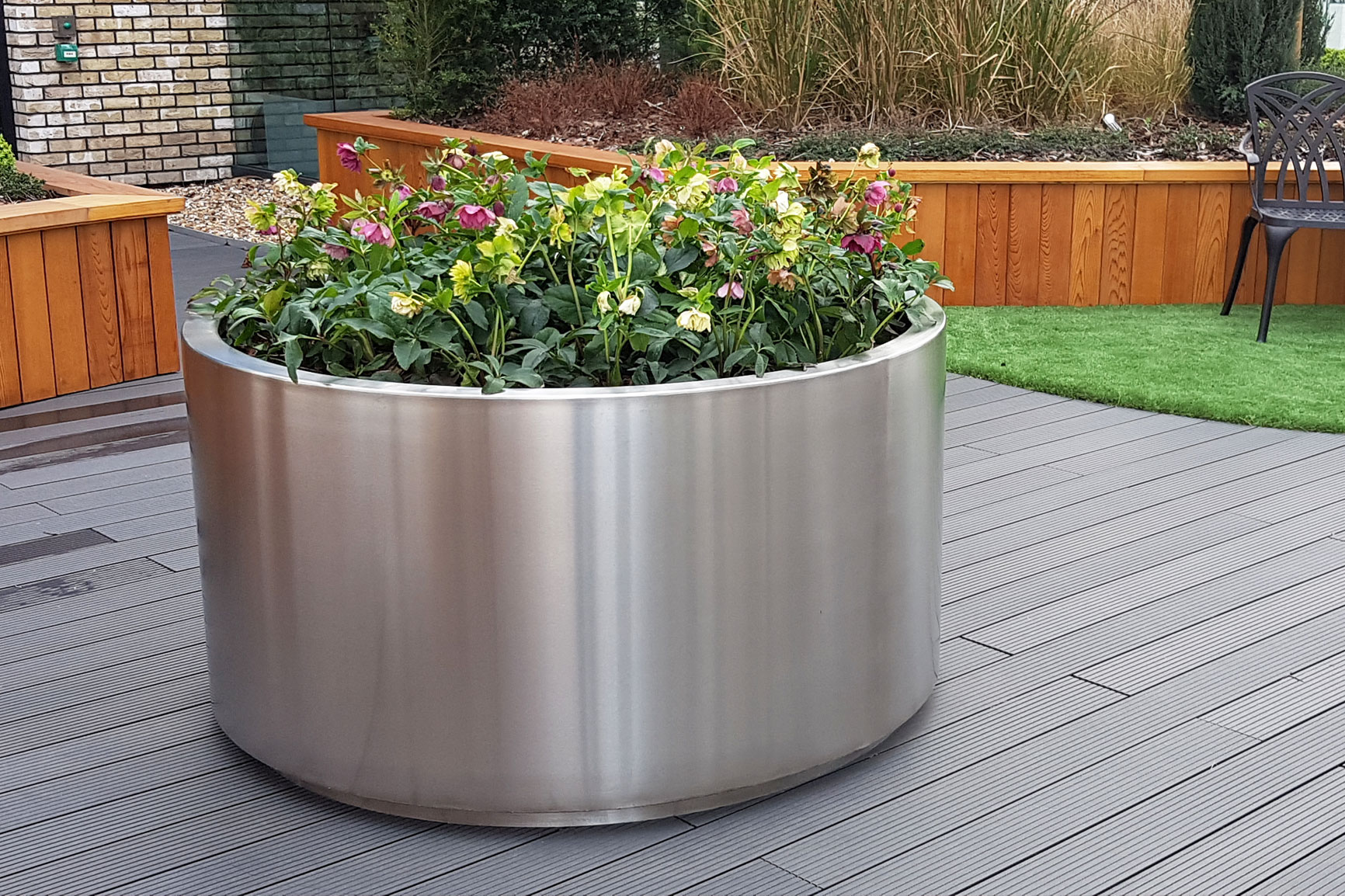
How Sustainable is Stainless Steel Street Furniture?
Stainless Steel Modular Street Furniture and Sustainability: Sustainability isn’t the first word that comes to mind when thinking about stainless steel, but there is a case to be made when it comes to street furniture. Shiny, silver, hardwearing, and strong all come to mind when we consider stainless steel, but we also think of its impact on the environment. This is particularly true for the manufacturing phase of stainless steel and then the subsequent processes that turn it into whatever item is required.
You’d be forgiven for assuming the worst of a stainless-steel option when it comes to street furniture but there’s more than meets the eye when it comes to its eco credentials. This is especially true regarding its resistance to weathering, damage, and overall longevity. When compared to its counterparts like wood, stone, cement, and plastic over a long period of time, stainless steel can often come out on top.
The macro view of stainless-steel modular street furniture
The main concern when purchasing street furniture along with cost and aesthetics, is often longevity. It’s important to get something that will stand the test of time and require little to no maintenance going forward, this is particularly true in the case of their use in the public realm. Stainless steel has this covered in spades, it’s hardwearing nature and its ability to resist even the harshest of conditions puts it atop the pile when it comes to materials.
Maintenance
In the case of maintenance, stainless steel seldom requires it, whereas wood will need varnishing and sealing from time to time. This is an associated cost that requires materials to do, along with hours spent applying it. Cement, stone, and plastic don’t have the same level of upkeep as wood, but they have issues of their own that stainless steel doesn’t share.
Repair
Due to its hardy nature stainless steel very rarely needs repairing, it is heavily resistant to chipping and dents depending on its construction. Cement, stone, and plastic are much less resistant to this sort of punishment and as a result, are trickier to repair. Plastic can be popped back out with some heating, but there are no guarantees that it will fully revert to its original shape. Cement and stone are much harder to repair and repair well if they’re chipped or damaged, they can be patched up but often the resulting repair is visible. Wood panels may need to be replaced if fractured or split with another associated cost, if the damage is severe enough it could cause the whole unit to need replacing.
Weathering
All the materials weather admirably but over time their surfaces can become dulled by the sun and rain exposure. Stainless steel stands out in this regard, once again, due to its resistance to moisture and sunlight.
Modular street furniture – a benefit for all
Modular furniture lessens the impact of these afflictions due to its compartmentalised nature. Individual pieces can be swapped out should they become damaged or worn down with time. This prevents the need for an entire bench, planter, or feature to be completely remanufactured and replaced. It’s quite literally a case of swapping over the individual units. Modular street furniture boosts the eco-credentials and overall sustainability for all installations regardless of the material used.
Combining Stainless Steel and Modular Street Furniture
When zooming out and looking at the lifecycle of street furniture, the benefits of stainless steel become much more apparent. With increased longevity through weather resistance, damage resistance, and considerably less maintenance, over the course of years, stainless steel looks a much more attractive prospect. It also stands to reason that the environmental impact of its creation is lessened when viewed in comparison with other materials that aren’t as hardwearing. A stainless-steel bench can last a quarter of a century whereas a wooden, stone, cement, or plastic may need repairing and replacing two to three times, or more, during the same period. In this case the environmental impact of the repeated manufacturing and reinstallation dwarves the initial cost of a stainless-steel furniture piece.
Now combine the longevity factor with the ability to replace individual sections, in the case of stainless-steel modular furniture, and you have an installation that can quite literally last a lifetime. As mentioned before this makes stainless steel modular furniture ideal for use in the public realm. They can be fitted in confidence with a custom layout to suit any location.
